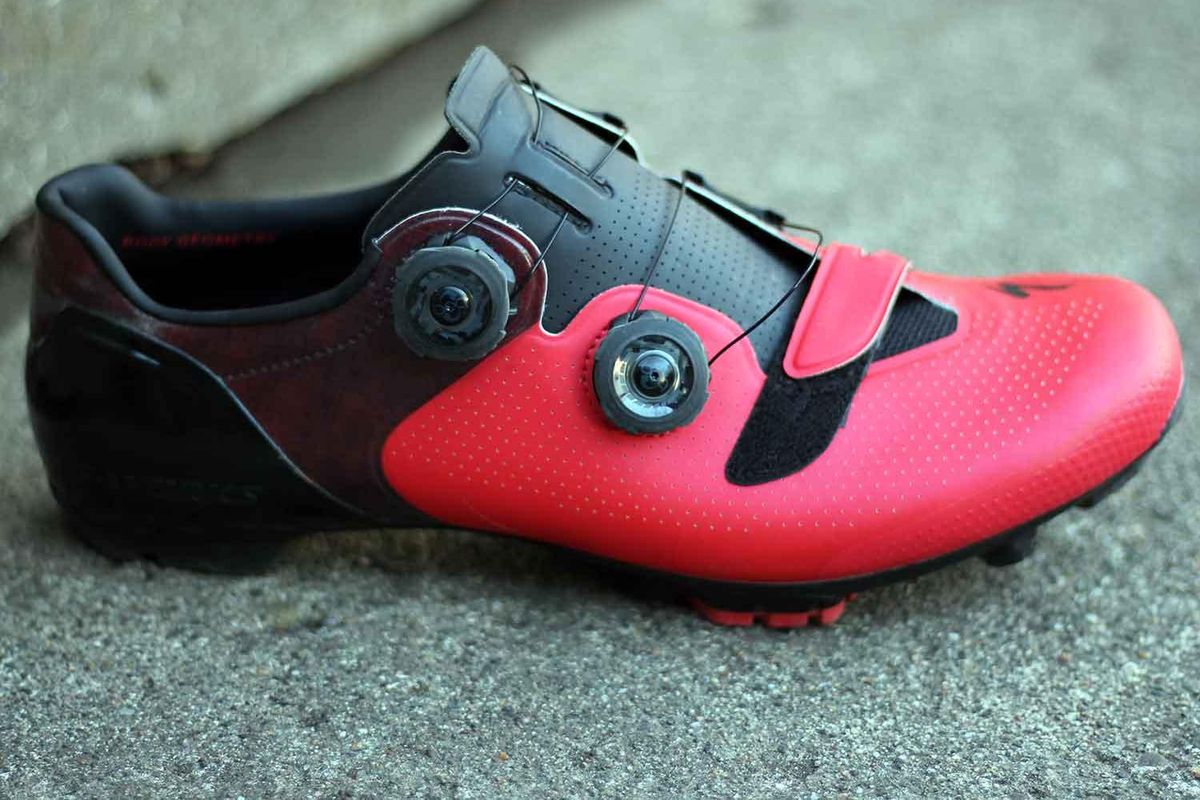Gear Junkie: Testing the lightest MTB shoe in the world

The ingredient list looks curated and high-cost: Carbon fiber, titanium, Dyneema fibers, and a svelte perforated upper constitute this shoe. They fit close, clip to a pedal with a rigid snap, and stay tight to the foot as you crank mile after mile of singletrack trail.
Beyond their outrageous price of $400, there are few immediate downsides to the S-Works 6 XC mountain bike shoe. This is the Specialized flagship, a captain over a fleet of footwear the company sells starting at one-quarter this price.
Why spend for this shoe? Most people should not. Like most high-end products made for cyclists, you’re paying a premium for shaved grams and a design so dialed it’ll grace the feet of the pros.
At 270 grams per shoe (men’s size 9), these are literally half the weight of some footwear made for mountain biking. And many race-ready mountain bike shoes are 50 to 100 grams heavier at least.
Why does weight matter? When you are cranking thousands of revolutions per hour the sum of the spinning mass sucks energy with each stroke.
Granted, it’s a minimal advantage when you’re talking grams. But bikers are infamous for trimming weight at almost any cost. These shoes will be paired with similarly weight-conscious and pro-level bikes, likely costing $5,000 and much more.
But there is more to these than light weight. They are stiff – super stiff – and engaged, responsive, effective, and fast when your legs are spinning to move the bike ahead.
Though tight-fitting, the shoes are comfortable for training and racing alike. A cup of carbon fiber keeps the heel in place. Specialized calls this the “PadLock heel,” noting the whole shoe has a “snug fit that’s incredibly secure.”
But all that snug-ness makes the shoes hard to put on. Don’t bank on these for a fast transition in an off-road tri. I struggled to pull the carbon cup over my heel without disengaging the lacing cables. It’s a slight annoyance, but the price to pay for a fit that does indeed lock the heel in place.
Despite the tight heel, the toe box is generous. I found the shoes comfortable on my feet even after a couple of hours on a trail.
Laces are traded for dual Boa closures. These dials, linked to thin steel cables, twist to tighten the foot in place. I have come to expect Boa as default on my cycling shoes – it’s superior in most circumstances to buckles, Velcro, and laces you tie.
The upper feels like a thin leather, including intricate perforated holes. But it’s synthetic, including Dyneema fibers that are bonded on to create what the brand calls “no-stretch zones.”
A titanium alloy is used for the cleat nuts. This metal is lightweight and durable, a weird upgrade but appropriate on a shoe that costs $400.
Underfoot things are less unusual. There’s a rubber heel and toe tread for traction. Requisite removable spikes near the toes give purchase when you hop off a mountain bike to push on handlebars running up a too-steep hill.
All this equals a sublime experience underfoot. I have few complaints when swopping a berm or cranking a steep grade.
Specialized talks with confidence about the shoes, as it should, touting them as the lightest and “most connected” XC race shoes in the world. It’s a tall claim, though one I am convinced could be true.
On the net: gearjunkie.com.